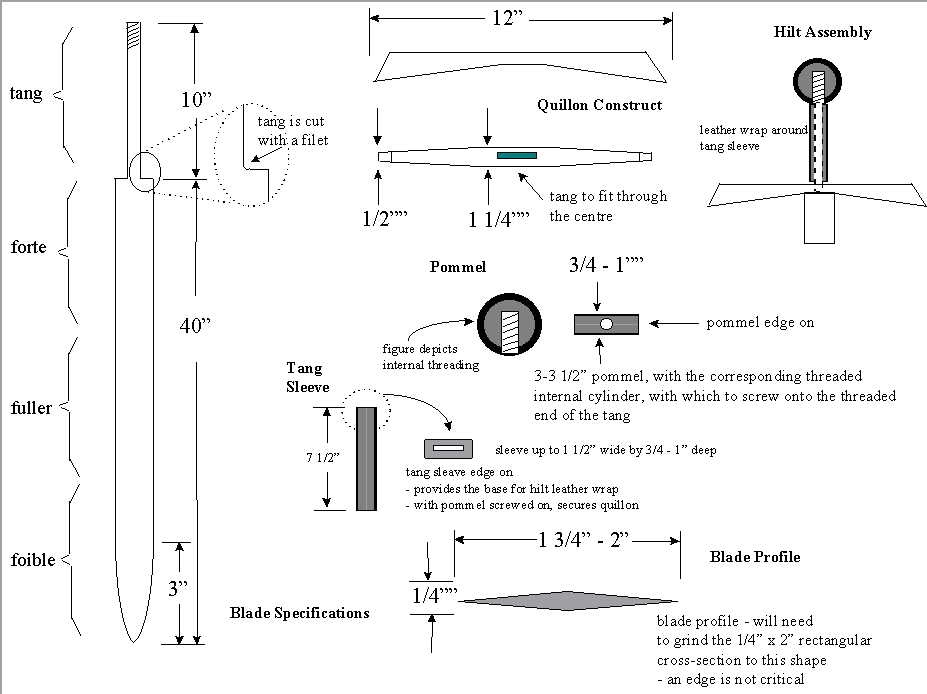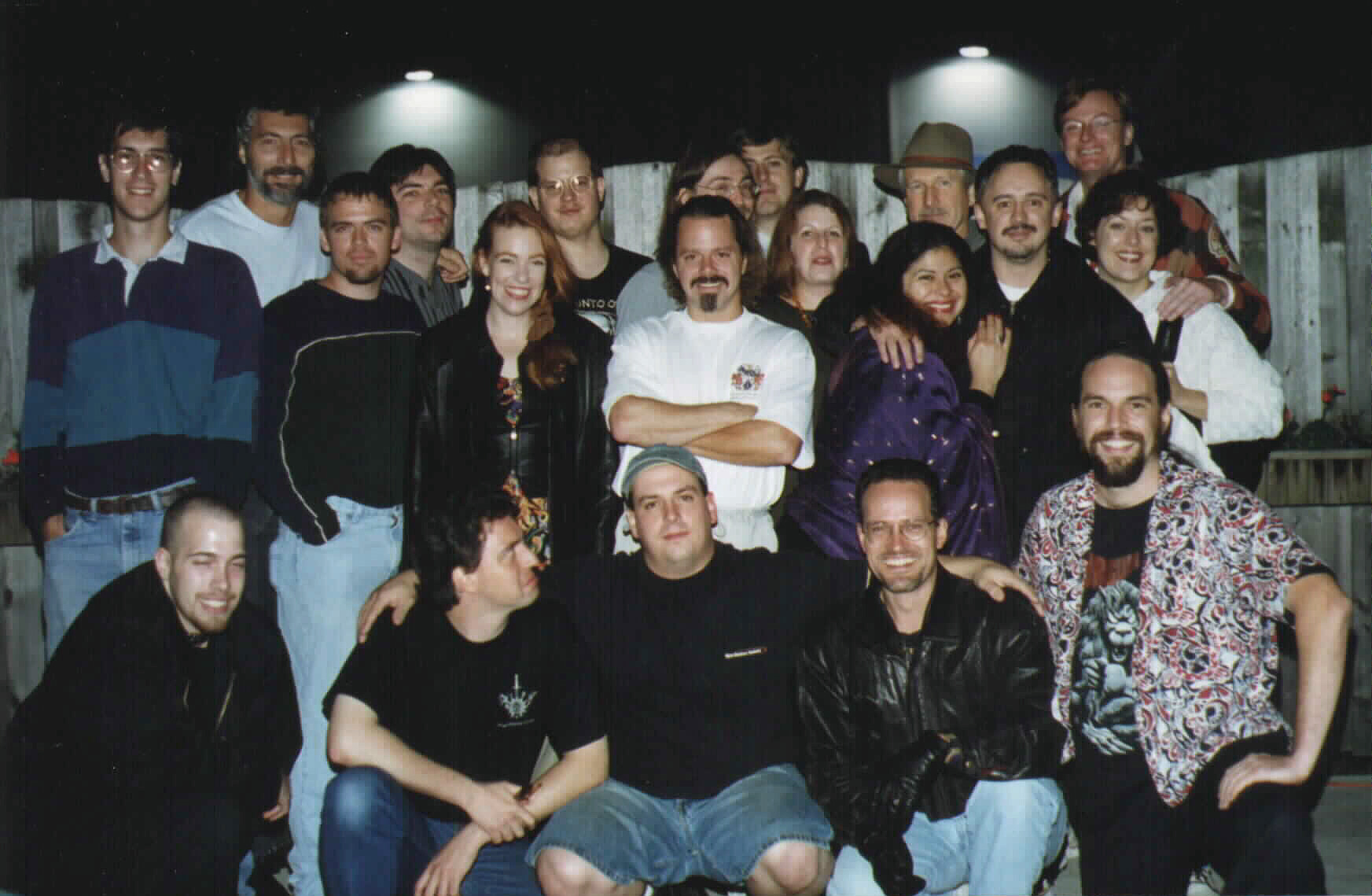History of AEMMA
The Italian "Seed" in '97
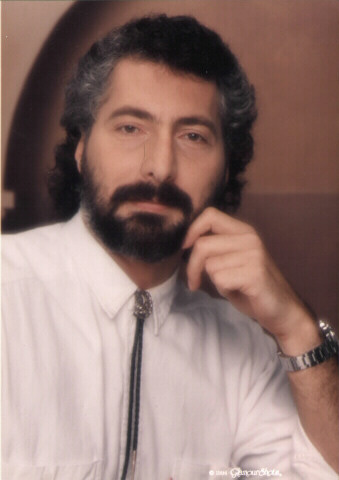
The story of AEMMA actually began in Janurary, 1997 in the beautiful city of Milan, Italy, where David M. Cvet was on an information technology contract consulting with the Italian bank, Banca Commerciale Italiano (BCI) located on Piazza della Scala. Having had an interest in all aspects of medieval history, it was during this time in Milan that his passion for the sword surfaced after one of the staff at BCI, knowing his interest, introduced David to a friend of his by the name of Ulysses, who was working on a manuscript he had inherited from his grandfather, who happened to be the swordsmaster for the Hungarian calvary and who instructed them on sabre fencing on horseback. This manuscript in his possession happened to be a poor quality photocopy of Fiore dei Liberi's "Flos Duellatorum". He was intent on resurrecting the lost art, and was happy and pleased that David shared his interest. They worked through the sword plays illustrated with captions in the Fiore's treatise, never actually working through the other sections of the treatise as the interest was primarily on swordplay. Obviously, his Italian background allowed for some abilities to translate the verses found in the manuscript, and through trial-and-error, detailed each play physically. Throughout the year while working part-time in Milan, David had searched for a similar activity in Toronto, but was dismayed that there was nothing like this in Toronto. The only thing that came somewhat close to this form of swordplay was the SCA and therefore, contemplated joining the SCA or starting something on his own.
Version 1.0, 1998
Having returned to Toronto, more or less full-time, with periodic trips back to Milan, David found himself attached to a local Society for Creative Anachronism or SCA [1] group in the north-end of Toronto known as "Canton of Skeldergate", which is part of the "Kingdom of Eoldormere". This was the only game in town at that time. After 6-7 months with the SCA, David became somewhat disenchanted during the summer with the style of fighting as he realized it was too distant from the research conducted in Milan and was disatisfied playing with rattan sword-like-objects. He wanted to find a closer interpretation to the original techniques found in Fiore's manuscript and decided to pursue assembling a study group focused on the research and reconstruction of "live-steel" swordplay. Sometime during July of 1998, David found a few like-minded individuals who shared his interest in pursuing live-steel swordplay. While the little study group was evolving, David began formulating an organizational structure of the future "Academy" and peppered the initial startup members with numerous correspondence (emails) and documents with discussions on organizational structure, marketing, identify a treasurer, establish associates/affiliations, composing a training guide, sourcing training swords, sourcing/building mail shirts, define a mission statement, membership fees, designing a coat of arms, defining what this "thing" was to become, and setting up a domain name and website.
There was much happening during the remaining portion of 1998. David lost his interest with the SCA, and focused his energy on developing the concept further and placing some structure around this "thing". Potential sources of steel swords were identified. Names of the "thing" was tossed around at that time included: "League of Medieval Warriors", "Order of European Medeival Combat", "Order of Medieval Martial Artists". Both the name of the "thing" and mission were adopted by the founding members on August 12, 1998, as the "Academy of European Medieval Martial Arts" and the mission statement which read: "The mission of the Academy is to resurrect the combat skills, philosophies, principles of an accomplished European Medieval martial artist and to achieve a state of which would be consistent with that of a 12th century warrior in both technology and ideal.". The domain names contemplated at this time were "www.aemma.org" and "www.livesteel.org", and the first sword design and quote materialized around this time as well. The final domain name selected was "www.aemma.org" and was created and registered on August 25, 1998. The AEMMA's first training document entitled "Training Forms" was the first of many composed during the coming months. In November of this same year, AEMMA's first website made its debut on the internet which depicts a mission statement which is nearing the current mission statement of AEMMA, and the coat of arms are approaching the final design now blazoned for AEMMA which was granted by the Canadian Heraldic Authority. The beginnings of an online library also began with the implementation of the website. Medieval manuscripts sources were obtained from museums and libraries in Europe, along with their permission to digitize the files and display on the AEMMA website.
Version 2.0, 1999
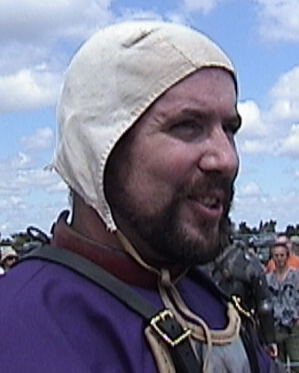
A milestone in the development of the Academy was a lunch time meeting with with Brian A. McIlmoyle that was scheduled for January 8, 1999 at the Hot House Cafe on the corner of King and Jarvis, Toronto. David conveyed his ideas and plans, spoke nearly non-stop for nearly an hour, and Brian was sitting there quietly, listening intently, rarely saying a word. At the end of the monologue, after a few moments, Brian simply responded with "I'm in". Brian with his over 15 years fighting in the SCA, and his military background provided a welcomed additional expertise and energy into the project. That was the beginning of a long time relationship between David and Brian, both dealing with the challenges, growth, stabilization of AEMMA in the coming years.
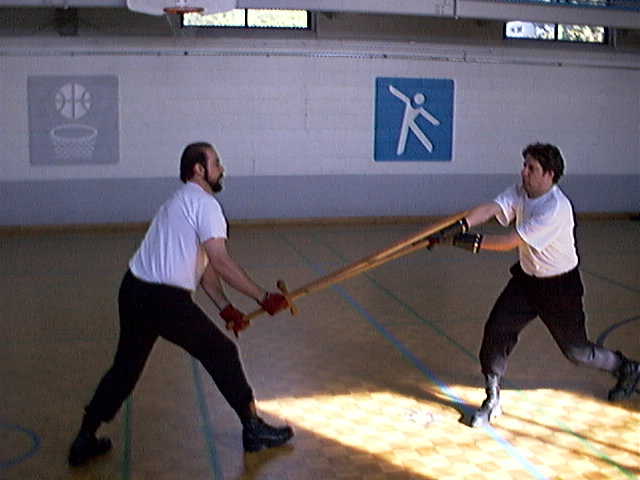
1999 was a year of rapid growth and development in the area of historical martial arts, not only for AEMMA, but for many other historical martial arts schools in the world. The Academy now had a number of interested parties, including Mike Rasmusson, Kevin Lewis, Kevin Jarbeau and Robert Gissing. David's brother Anton J. Cvet was doing some activities in Ottawa and was working with Dave B. Murphy around that time as well. Information exchange was rampant between schools across the planet. There was high energy and excitment in this field and everyone was contributing to the general knowledgebase of the various arts, English, Italian and German. Strategic relationships were being forged that year with individuals such as Stephen Hand, Stoccata School of Defence in Australia, Milo Thurston, Linacre School of Defence in the UK, Paul Macdonald, Macdonald Academy of Arms, Edinburgh, Ramon Martinez & Jeanette Acosta-Martinez, Martinez Academy of Arms, New York, Terry Brown, Terry Brown School of English Martial Arts, UK and Andrea Lupo Sinclair, The Andrea Lupo Sinclair Academy of Martial Arts, Italy and Greg Mele, founder of Chicago Swordplay Guild. Other connections included notable individuals for sources of arms and armour such as Christian Fletcher, Robert Valentine (Valentine Armories) and Peter Fuller, Medieval Reproductions, Calgary, AB to name a few. David attended the first Western Martial Arts Workshop hosted by the Chicago Swordplay Guild in Chicago, mid-October 1999. By virtue of David being there, it became the first "international" WMA workshop. It was at that workshop that a discussion materialized, which included Greg Mele, John Kovacs and Dwight McLemore, of hosting such an event on an annual basis, and where AEMMA would host the event in the fall of 2000. It was all agreed to that AEMMA would host the next WMAW in Toronto. As the year was nearing the end, there were many discussions on the rules of armoured combat for the tournament to be included in the 2000 WMA, as well as promoting the event to many historical martial arts practitioners. Planning and testing the waters for interest for the next workshop was already underway before the year end. The Academy was accumulating an ever expanding digital library of treatises, which were housed by the AEMMA website's online library. These resources were sourced directly from libraries and museums, often received in microfilm format, and later digitized by AEMMA, and returning to the source, a digital copy of their microfilm.
2000, the big year
AEMMA's biggest and most important event for the year was the 2nd Annual International Western Martial Arts Workshop, hosted at the Toronto Exhibition in the building operated by Medieval Times Restaurant Toronto, October 13-15. There were 130 attendees at this workshop, some coming from the UK, Scotland, Italy, Belgium, Spain and USA. The event attracted local media including the CBC. [2] There were both unarmoured (rapier) tournaments and armoured tournaments. Brian, et al, spent an inordinate amount of time working on the rules and regulations to govern the armoured tournament.
2001 and onwards
2001 was a year that set the tone for AEMMA development and activities for many of the following years. In mid-2001, AEMMA's first publication entitled "The Art of Longsword Combat - Book 1" was released to the world. It was a compilation of the pedagogy in place at AEMMA at that time, written by David M. Cvet, with input, review and edits by Anton Cvet, Brian McIlmoyle and Dave Murphy. Other individuals acknowledged for their suggestions and review were Peter Kautz (Alliance Martial Arts), Greg Mele (Chicago Swordplay Guild) and Bartlomiej Walczak (Brotherhood of the Eagle's Nest, Poland). It was a long term project, with beginnings in 1999 and captured a "freeze frame" of what AEMMA was doing at that time. By the time the book was released, the training program at AEMMA had already move on to focus entirely on the works of Fiore, however, it was felt that the material still had relevance to historical martial arts practitioners across the planet. AEMMA published it online on their website whereby anyone could download the PDF file. To the surprise of David and AEMMA, over the course of two years, there were more than 14,000 recorded downloads! To this day, periodically queries will arrive at AEMMA from individuals who still use this book as a reference for their own training program even though, the book has been "off-line" for more than 8 years!
The Academy in time had become a recognized institution in Toronto, whereby the general public was cognizant of what AEMMA was all about. The training programs delivered at the Academy continue to evolve as improved understanding of Fiore's works continues with great continuing contributions by Aldo Valente, Beau Brock, Ariella Elema, Kelly Rekuta and John Woods to name a few. And members of the Academy had periodically been involved in a number of documentaries and films over the years. Although, this wasn't the purpose of the Academy, it didn't hurt to make some coin on the members' new skills developed over years of hard training!- The Society for Creative Anachronism (SCA) is an international living history group with the aim of studying and recreating mainly Medieval European cultures and their histories before the 17th century. A quip often used within the SCA describes it as a group devoted to the Middle Ages "as they ought to have been", choosing to "selectively recreate the culture, choosing elements of the culture that interest and attract us". Founded in 1966, the non-profit educational corporation has over 30,000 paid members as of 2014 with about 60,000 total participants in the society (including members and non-member participants). source: Wikipedia. Society for Creative Anachronism. Retrieved: January 17, 2017.
- Summary Report - 2nd Annual International Western Martial Arts Workshop. October 13-15, 2000. The report includes opening remarks by David, and reports on the Rapier tournament and armoured tournament. It is thought that this was the first ever international armoured tournament comprised of 17 combatants.

